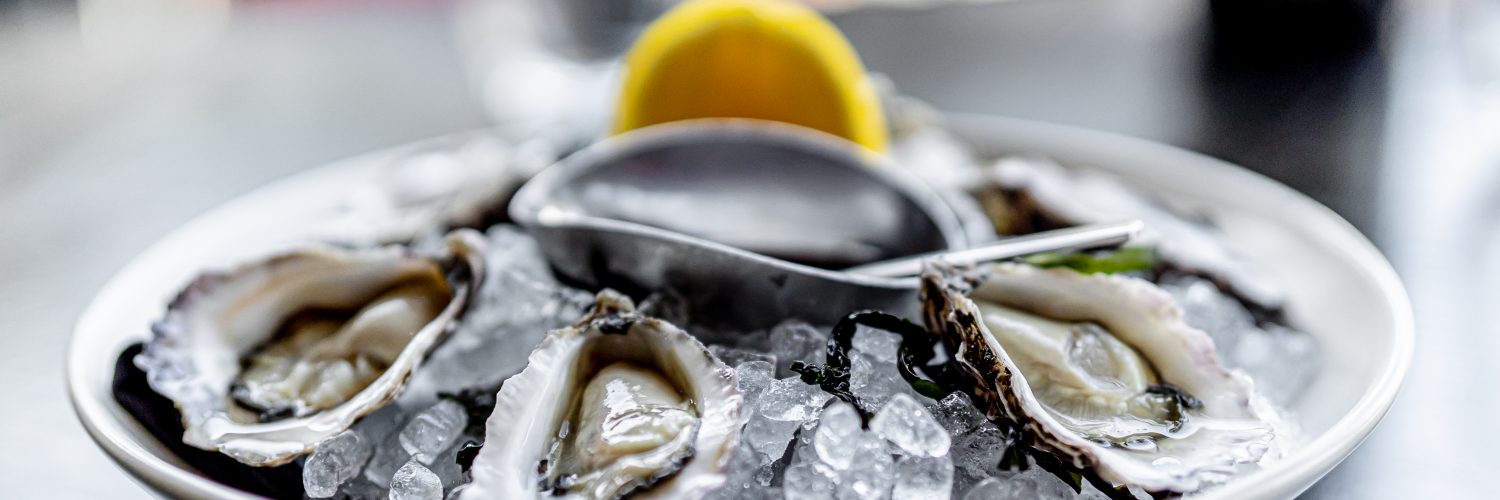Love oysters, but don’t know a thing about them? Flying Fish’s Executve Chef Peter Robertson is here to help give you the 101 on how to buy, store, serve and eat natural oysters.
Now that we’re spending more time at home and less out dining it’s nice to treat yourself to delicacies that would more likely be reserved for special occasions – like oysters. Now that seafood prices are dropping it’s the perfect excuse to bring add oysters to the home menu. If you don’t know the first thing about buying and storing oysters, then this guide will come in handy. Peter Robertson, Executive Chef of Fying Fish, is an expert in oysters and has kindly shared his knowledge on the delicious delicacy so you to can become an expert.

How to buy
Most people on the East Coast of Australia opt for Rock oysters (formally known as Sydney rock oysters). They are generally thought to be the best, and they are delicious, however different regions up and down the East Coast may be better or worse depending on the time of year. At Flying Fish we use AOC (Australian Oyster Coast is unique as it produces three varieties of premium oysters, including the Rock oyster, the rare Angasi ‘flat oyster’ and the popular Pacific oyster). It takes the guess work out of it as they work with a bunch of framers and the best of the best go into their appellation range. Other noteworthy oysters are the Moonlight Flat Oysters and Coffin Bay Pacific oysters.
How to tell a good from a bad oyster
Well let’s assume the oysters are fresh and in good condition and have been handled/shucked well. A good oyster will have a nice deep cup, the flesh will fill the shell. Then look for the flavour profile: brine, mineral, vegetal, sweetness, umami. These flavours will be present in all oysters, how much or little of each will depend on where and how they were farmed. It’s personal preference from there, but for me I like oysters to be high in umami, sweetness and brine, with a background minerality.
How to store
This depends on the state of the oyster. Before being shucked, an oyster is a live animal. Store in a cool place with a damp cloth over them. Around 15-20C is ideal. We used a fridge at home, which works greats. If the oysters are shucked, store as any other seafood, covered in a fridge between 2-5C. If you buy shucked oysters the sooner you eat them the better, from a quality point of view. From a food safety point, I would eat them within three days of purchasing. If you buy them live, then you have much more time on your hands. Generally speaking, five days out of the water is ideal to consume. Bear in mind they may have taken 2-3 days to arrive at the market. They can stay alive in the shell for up to 15 days.
How to open
A video may be easier to follow, but essentially you put an oyster knife in the heel of the oyster and then twist the knife (don’t bend) to pop the lid. Cut the abductor muscle to release the lid. Then comes the tricky part: do you flip the oyster or leave it untouched? Do you wash it under fresh water or leave it in its own juice? It’s a complex question and best discussed over a few beers and oysters.
How to dress
My go-to at home is a classic mignonette, it’s super simple and the best thing you can do to improve quality is make it at the last minute, it goes like this: red wine vinegar (better quality is better), fresh cracked white pepper, finely chopped eschalot. No need to season the oyster, it has enough brine.

How to serve
On lots and lots of ice. Oysters are best stored at room temperature but best eaten slightly chilled. A good bed of crushed ice is perfect for this.















